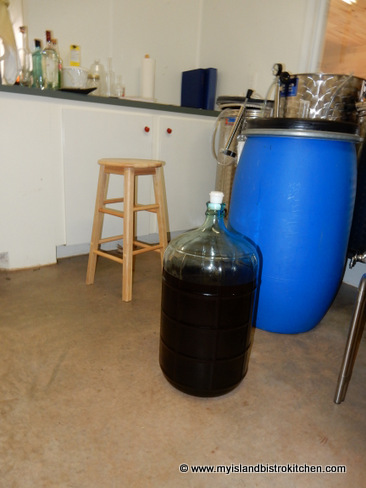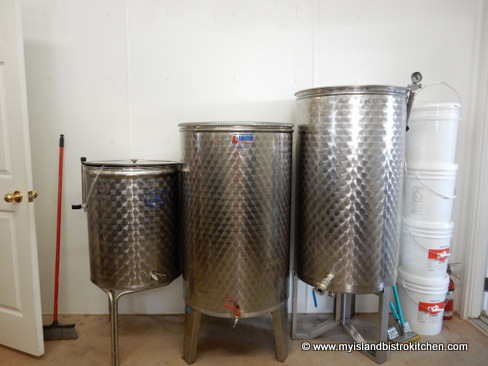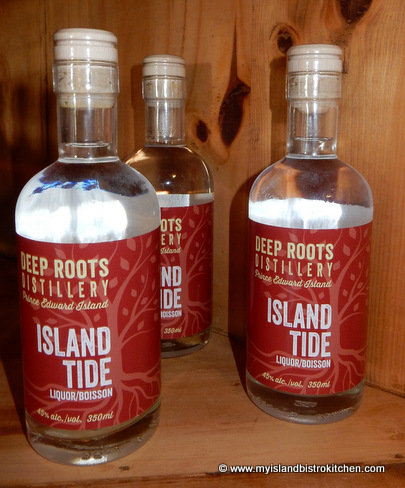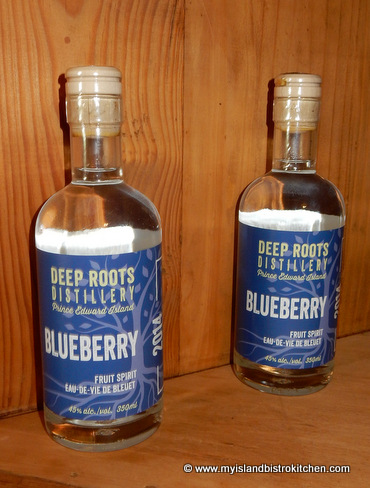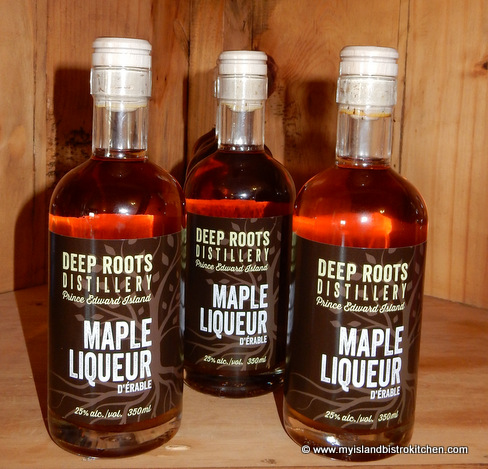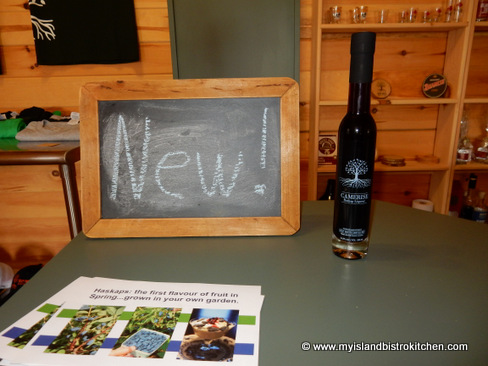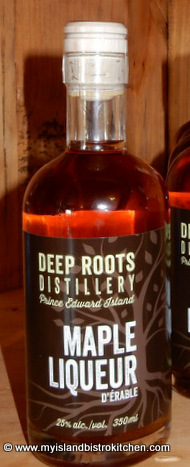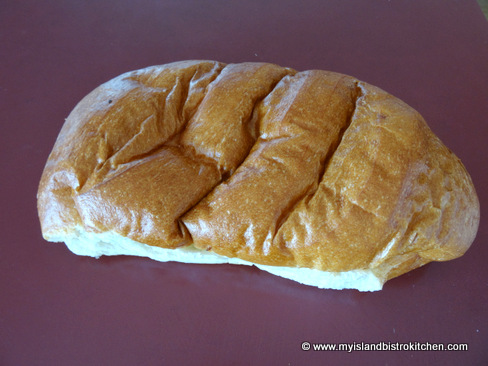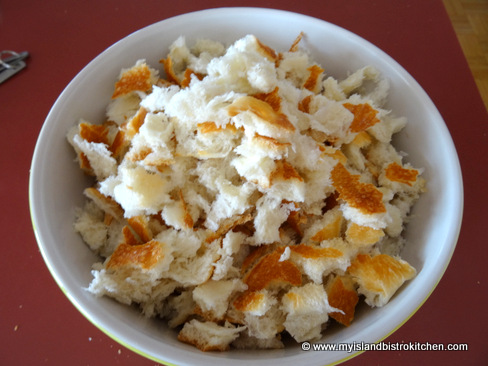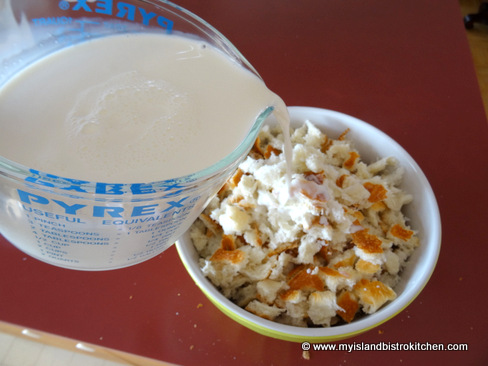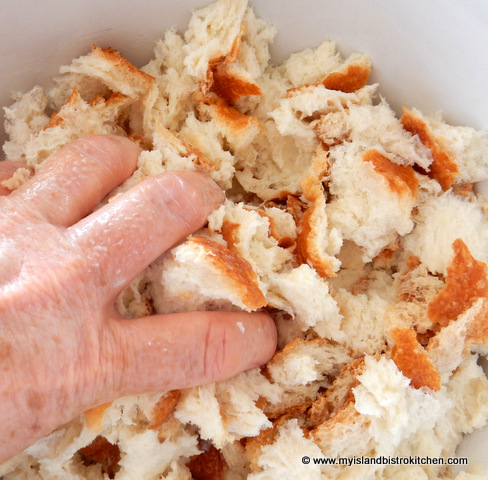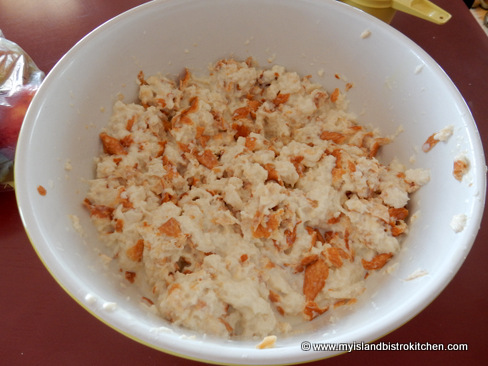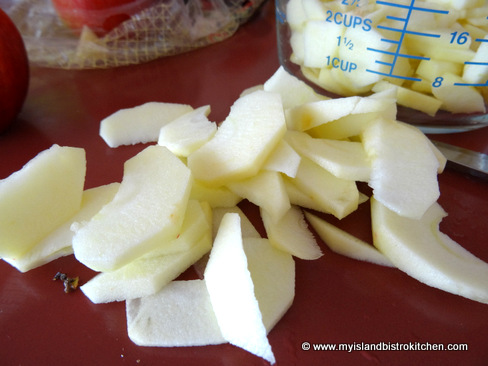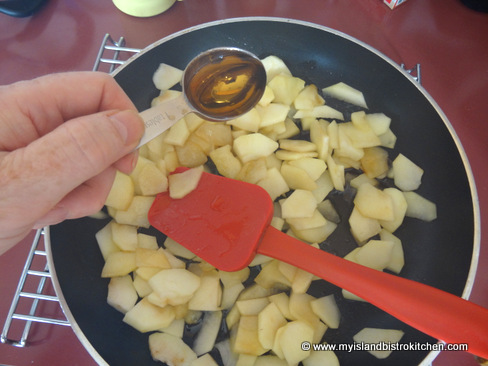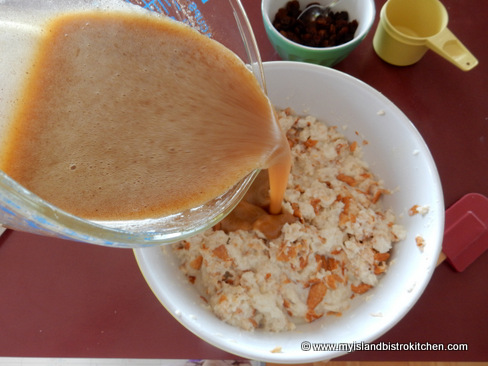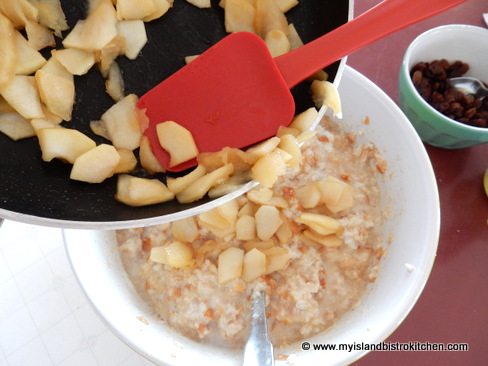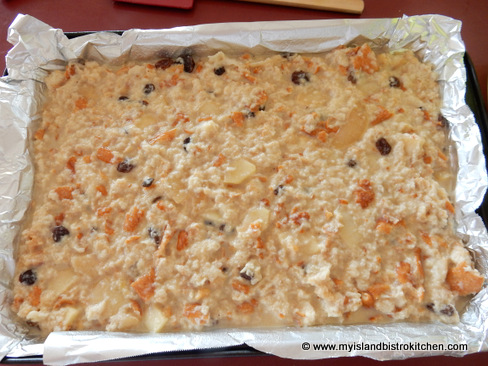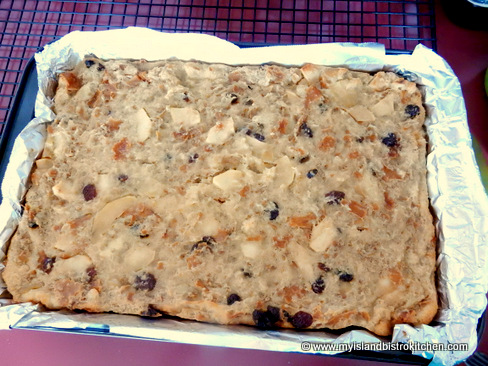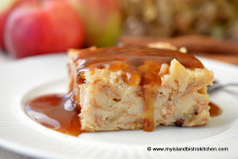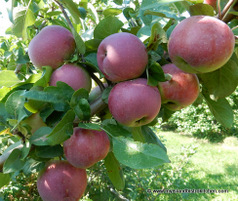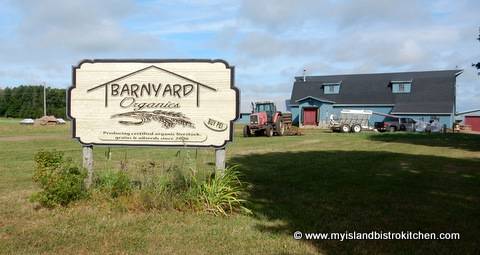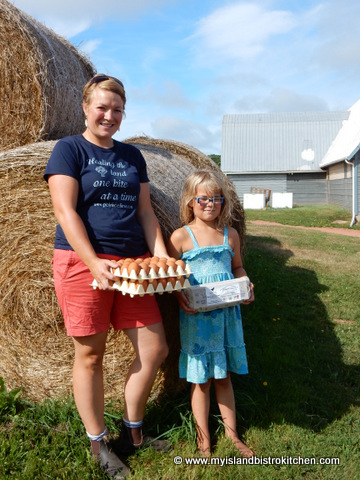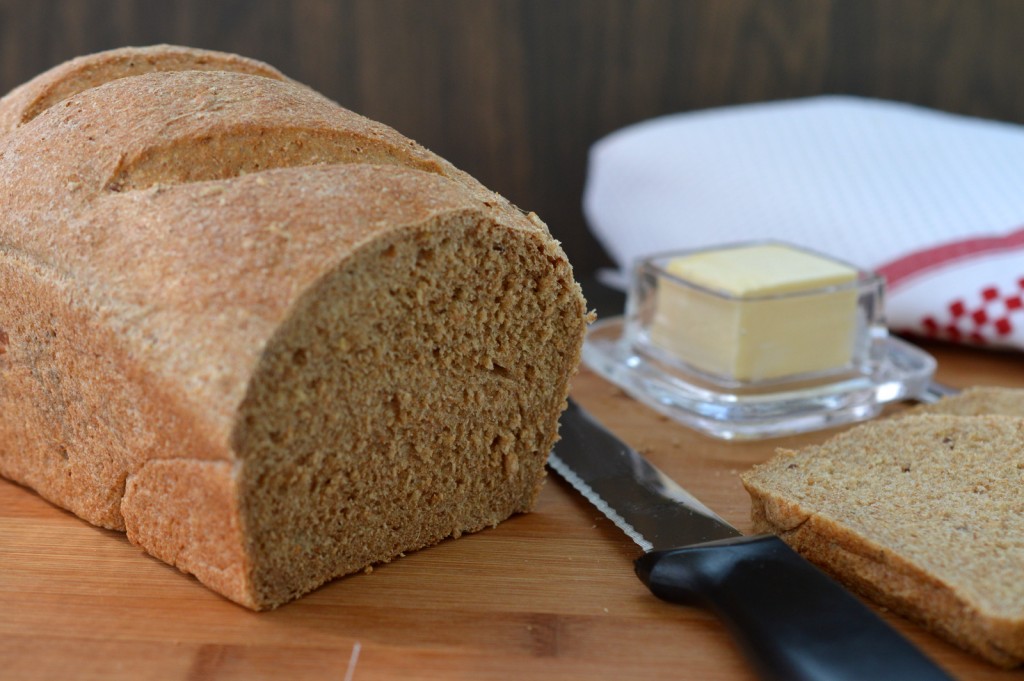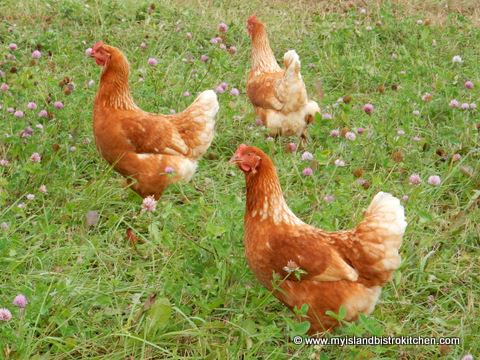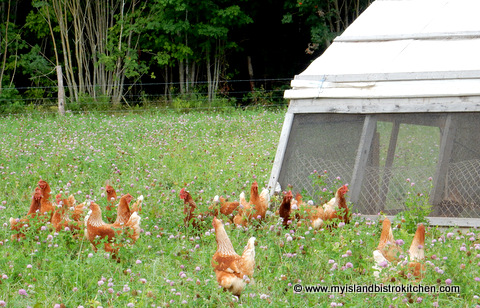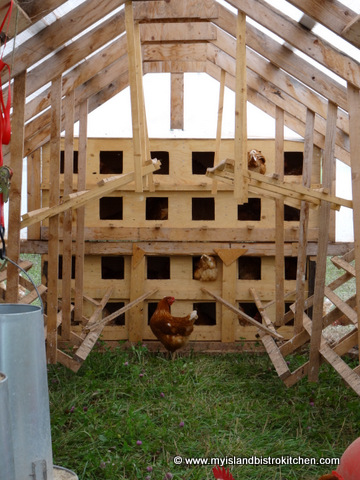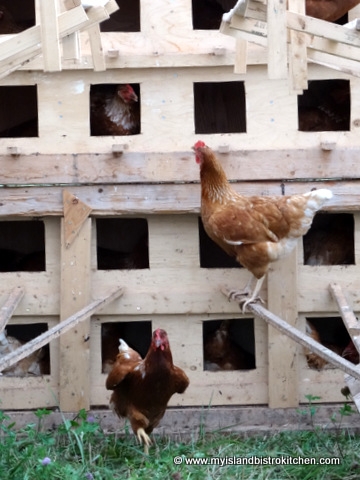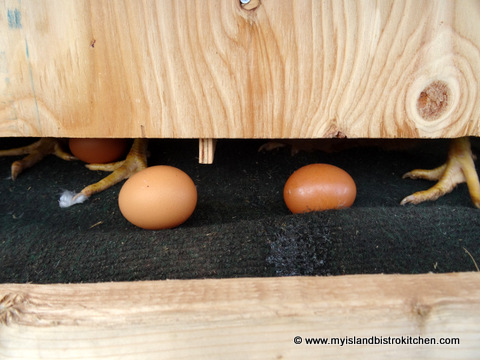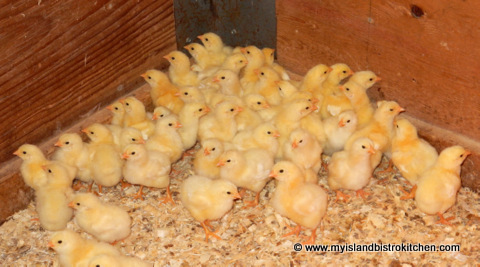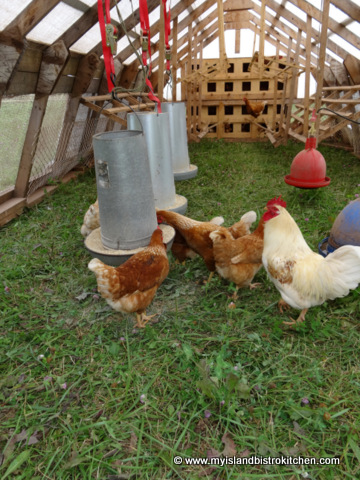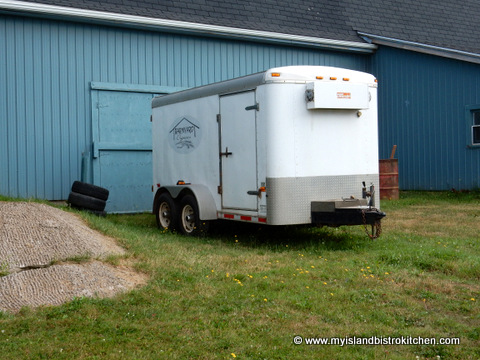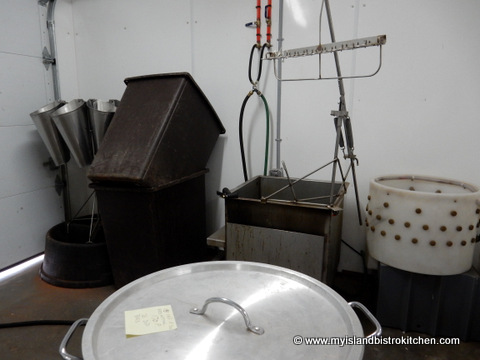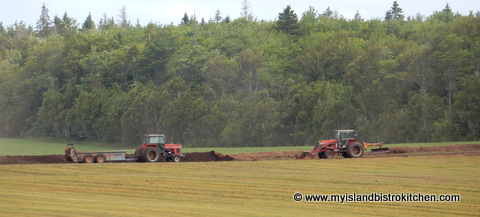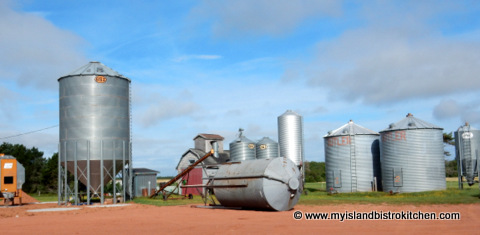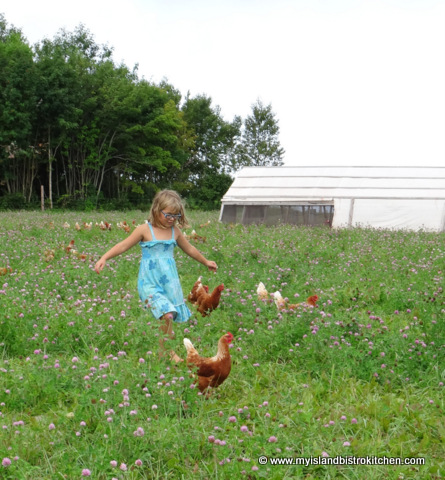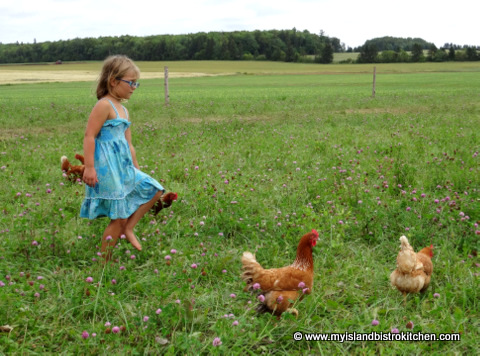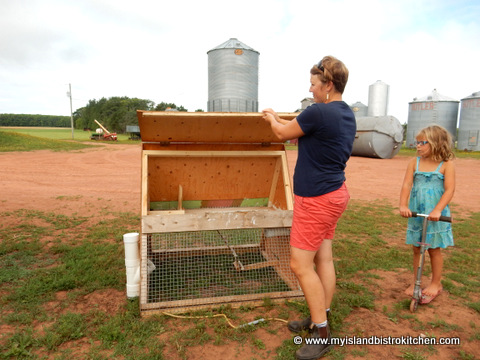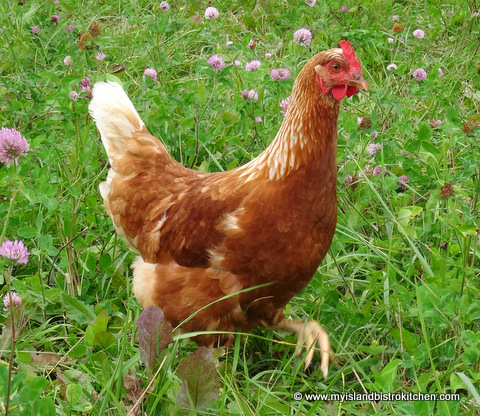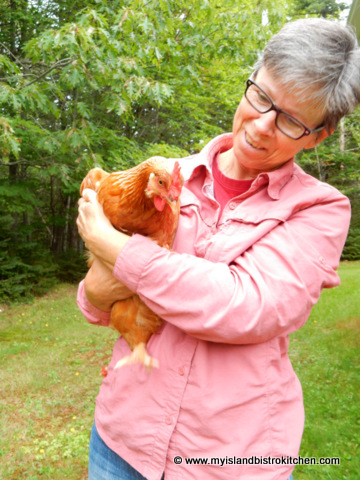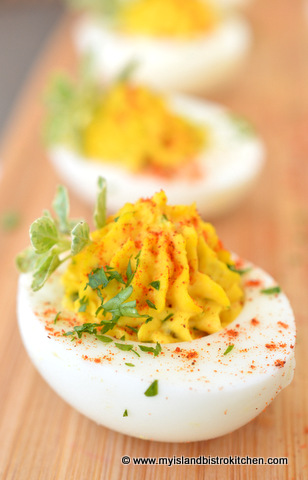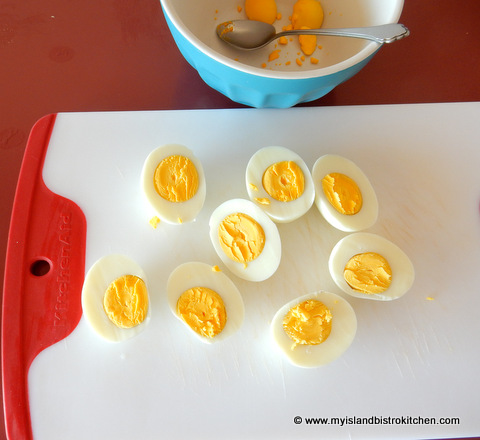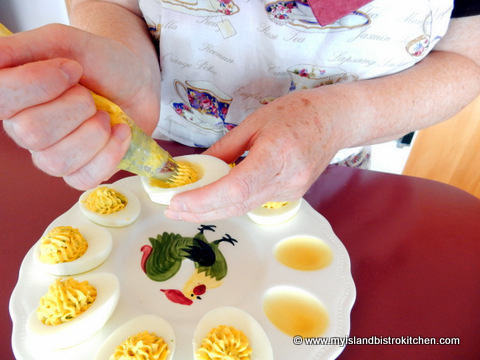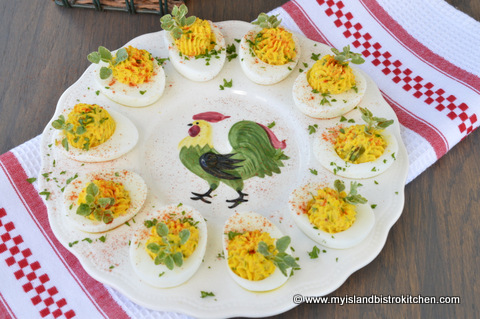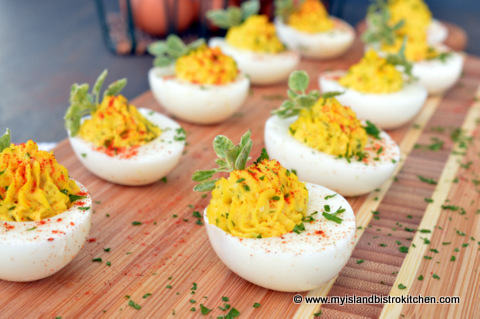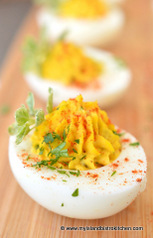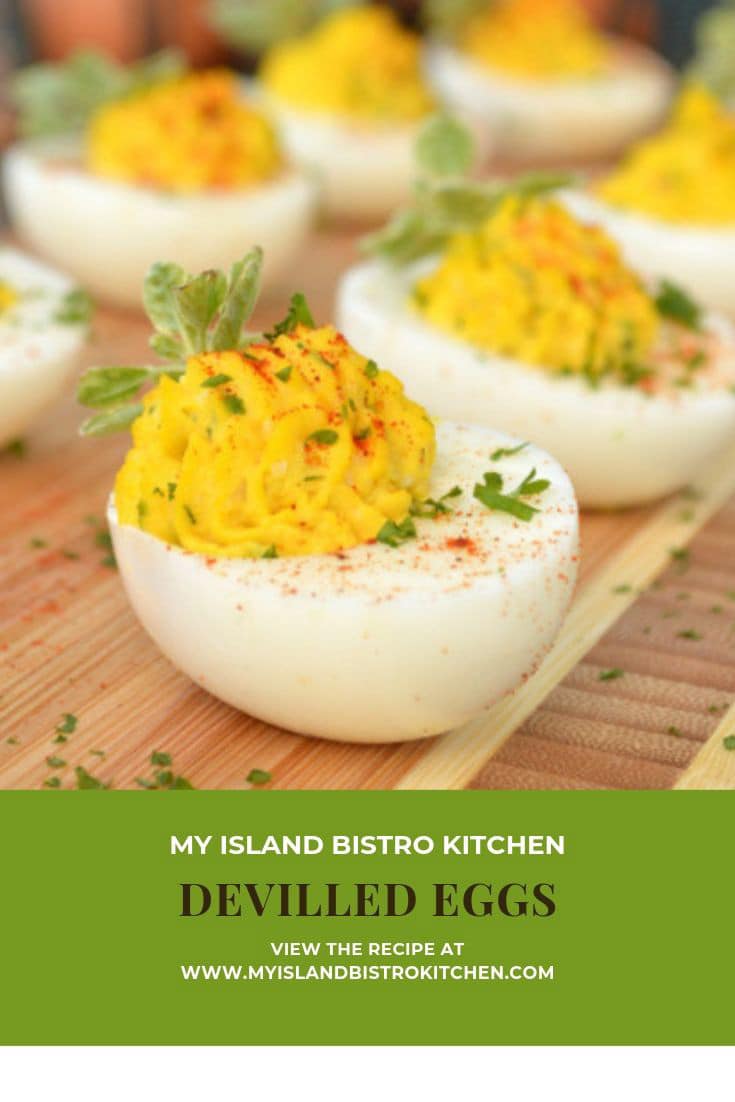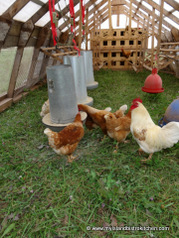Today, I’m taking you on a tour with me to Beamish Organic Apple Orchard and Deep Roots Distillery in Warren Grove, PEI. Owner, Mike Beamish, has been growing apples since 1990 when he started with 200 trees on his hobby farm near Charlottetown.
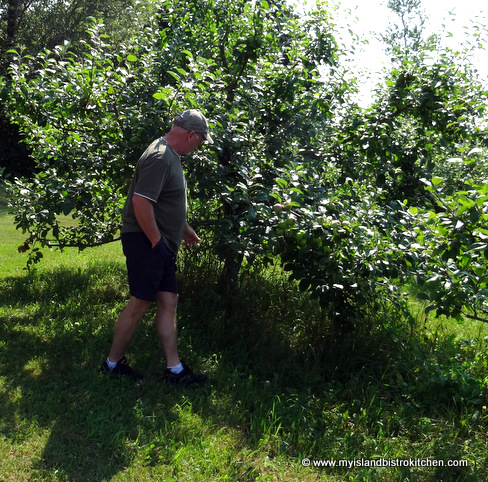
Mike’s goal was always to grow apples organically although he did initially grow them using conventional methods in the early years because it was difficult to find non-chemical controls for some pests. Once more research was done and non-chemical controls were available to growers, Beamish transitioned his orchard to be organic in 2003 following the standard three-year period to be certified organic. During the three-year period, no chemical applications can be used. Beamish is certified under Atlantic Certified Organics (ACO), a certification body which is accredited with the Canadian federal government. This body enforces the national organic standards such as buffer zone requirements from surrounding farms using conventional farming methods and it provides a list of approved substances that can be used in organic farming. The orchard is subject to annual audits by the ACO to ensure only approved substances and organic farming practices are used. Certified organic farmers are required to keep records of any products or substances used and the farmers must be re-certified each year.
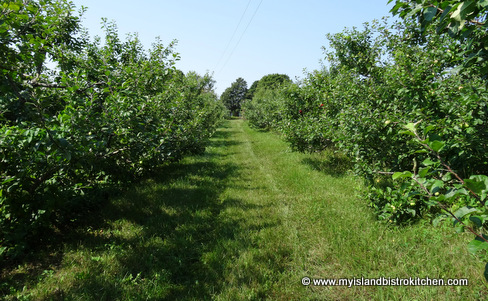
Growing apples organically does come with its challenges since farmers don’t have access to the traditional chemical treatments non-organic apple growers can use. Beamish says the biggest challenges are dealing with pests such as bugs and rodents, disease in the trees and apples, and ensuring soil nutrition. Any products applied to the ground or trees must be certified organic products only. He counters these challenges by buying and applying organic compost around the trees, installing little ground fences around each tree to deter rodents, and hanging certified organic products in the trees to fend off pests such as moths, apple fruit flies, and railroad worms.
 At one point, the Beamish Orchard had 800 apple trees; however, Island winters can be harsh and, in 1999, the orchard cut back to 500 trees in its U-pick orchard. The orchard currently has about 300 apple-producing trees. Beamish grows four varieties of apples – Red Free, Novamac, Liberty, and Freedom. The biggest seller are the Red Free, an early variety ready in mid-September.
At one point, the Beamish Orchard had 800 apple trees; however, Island winters can be harsh and, in 1999, the orchard cut back to 500 trees in its U-pick orchard. The orchard currently has about 300 apple-producing trees. Beamish grows four varieties of apples – Red Free, Novamac, Liberty, and Freedom. The biggest seller are the Red Free, an early variety ready in mid-September.
The Red Free variety is particularly good for cooking as these apples keep their shape and, because they are non-acidic, there is no need for a lot of sugar.

This year (2015) will mark the first year that the Beamish Orchard will not operate as a U-pick. They will still have apples for sale at the farm but, because they have reduced the number of trees in the orchard, there will not be enough apples to operate a U-pick. In addition, Beamish has also created another usage of his apple crop as he has started a distillery.

When Beamish retired three years ago from Holland College, he was looking for a retirement activity. Since he already had a ready supply of apples, he began making sweet apple cider and selling it at the Farmers Market in Charlottetown. His interest in distilling grew so he pursued a course hosted by the Bio-Food-Tech Centre in Charlottetown that focused on the science of distilling. In addition, he received some technical assistance from the New Brunswick Community College in Grand Falls. In June, 2014, Beamish obtained his license to distill and it wasn’t long before he began producing liquor, using local raw products whenever possible.
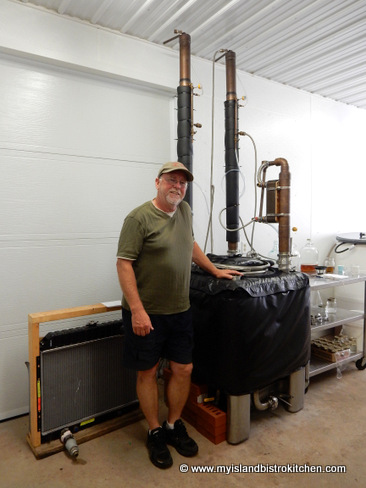
Today, Beamish has four products on the market: Island Tide (a cane-sugar spirit), Blueberry Eau de Vie, Maple Liqueur, and his newest, Camerise Haskap Liqueur.
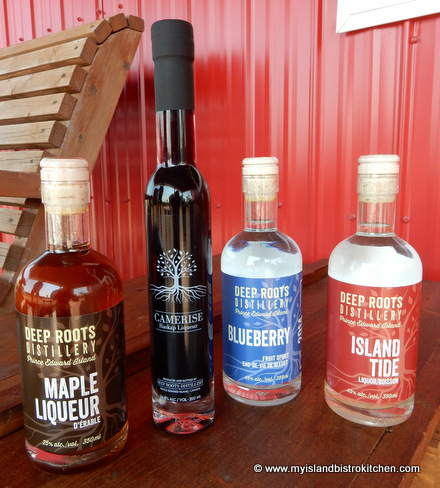
Beamish says the Island Tide liquor moonshine, with an alcohol content of 45%, is a cross between rum and vodka and would be best suited for martinis and mojitas. Historically, much of the moonshine made in PEI was made from cane-sugar. However, with more modern distilling techniques, it is somewhat smoother than what some folks may remember!
Mike Beamish says the Blueberry Eau de Vie does not have a strong blueberry taste but rather has the essence of blueberry. It has 45% alcohol content and is best served as an after dinner beverage over ice or in a fruit-based cocktail.
The Maple Liqueur is made from New Brunswick maple syrup and, with 25% alcohol, is stronger than most liqueurs. It is also suitable as an after dinner drink or served over vanilla ice cream or in baking.
The Camerise Haskap Liqueur is a new product from the distillery and has just been released this summer.
This liqueur, with 26.5% alcohol, is made with haskap berries which come from Phyto Cultures Inc. in nearby Clyde River. This liqueur is developed using a method by which the alcohol is infused with the whole haskap berries which sit in the alcohol for four months before being crushed. The Camerise Haskap Liqueur also is an after dinner drink and is meant to be served straight over ice.
Producing liquor is government-regulated and the products have to be analyzed by a certified lab in the same way as any big brand liquors.
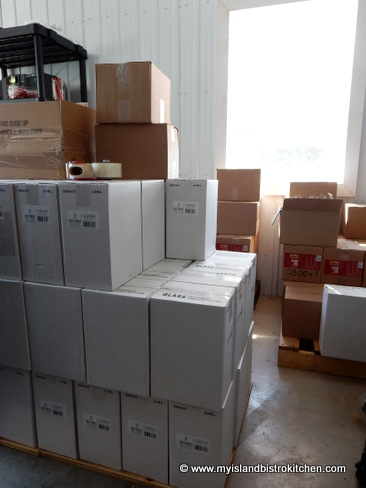
The products are labelled under the Deep Roots Distillery label and can be purchased at the Charlottetown Farmers Market and at the Distillery located at 2100 North York River Road, Route 248, in Warren Grove just outside Charlottetown. You can also find them on the shelves of many local liquor stores on the Island.
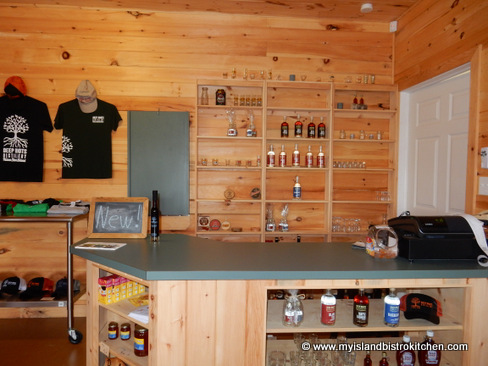
Tours of the apple orchards and the distillery are available for a nominal fee and Mike welcomes visitors to learn more about his organic apple orchard and new distillery. For more information, and hours of operation, visit the websites for Beamish Organic Apple Orchard and Deep Root Distillery.
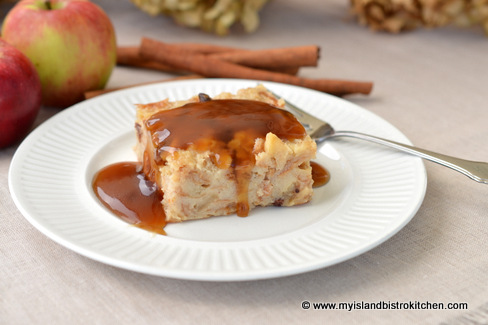
As is my standard practice when I visit a local food producer, I develop a recipe using the producer’s product(s). In my Apple-Maple Bread Pudding with Maple Sauce, I have used the Red Free apples from the Beamish Orchard along with the Deep Roots Distillery Maple Liqueur.
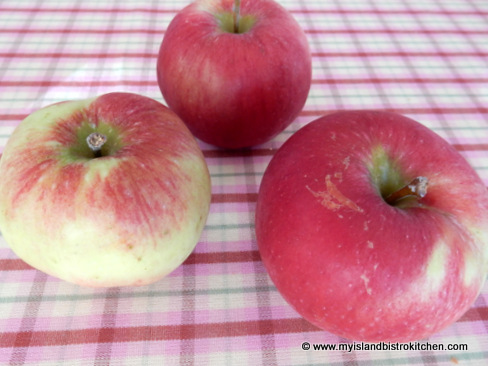
The Red Free apples are great in this recipe because they keep their shape and don’t go to “mush” or a sauce-like consistency in the pudding which would make it too soggy. The key is to sauté the apples enough that they are softened before adding them to the pudding batter. Adding some maple liqueur as the apples sauté provides additional flavour.
It’s a matter of opinion as to whether a bread pudding should be baked in a hot water bath or not. I have made bread puddings both in a water bath and without and, to be frank, don’t see any appreciable difference in quality of the baked pudding. So, for this recipe, I did not use the hot water bath baking method and the pudding was lovely and moist.
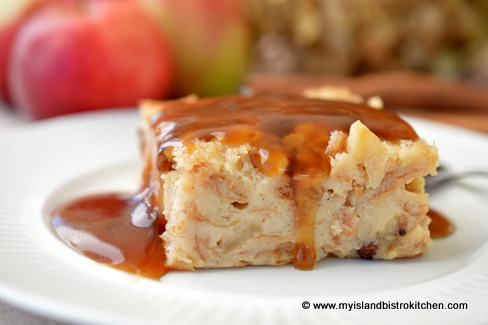
Apple-Maple Bread Pudding
Ingredients:
1 – 1 lb loaf French bread
3 cups whole milk
1 cup less 1½ tbsp Blend/cream (10%)
2½ cups thinly sliced baking apples (about 3 medium-sized apples)
½ tbsp butter
1 tbsp brown sugar
1 tbsp maple liqueur
3 extra-large eggs
1 cup white sugar
1/3 cup maple syrup
3 tbsp melted butter
2 tsp vanilla
3/4 tsp cinnamon
1/8 tsp nutmeg
1/8 tsp allspice
Pinch cardamom
¾ cup raisins soaked in 1½ tbsp maple liqueur
Method:
Assemble ingredients.
Preheat oven to 325°F.
Grease or line 9”x13” pan with greased tin foil.
In large bowl, break the French bread into small pieces, crusts and all.
Pour the milk and blend (cream) over the bread.
Cover and let sit for 30 minutes then handcrush mixture until well blended.
Meanwhile, peel, core, and thinly slice the apples.
Melt butter in saucepan over medium heat. Add the apples and sauté for about 2 minutes. Sprinkle with brown sugar and sauté apples for another minute. Remove pan from heat and add liqueur. Return to heat and sauté the apples for 5-7 minutes, or until they are softened and a golden color.
In medium-sized bowl, beat the eggs well. Add the sugar and beat again. Beat in the maple syrup, melted butter, and vanilla. Add the spices and stir well. Pour over bread-milk mixture in large bowl and mix well.
Lastly, gently fold in the sautéd apples along with the raisins.
Pour mixture into prepared pan. Smooth batter evenly in pan.
Bake for about 50-60 minutes or until it springs back to a light touch and/or a cake tester (or knife) inserted into 2-3 places in the pudding comes out clean.
Remove pudding from oven and transfer pudding pan to a cooling rack to rest for 20 minutes. Slice into 12 pieces and serve warm with maple sauce (recipe below), crème anglaise, or ice cream.
Yield: 12 servings
Maple Sauce
Ingredients:
1 cup brown sugar
3 tbsp cornstarch
dash of salt
2 cups boiling water
2 tbsp maple syrup
2 tbsp maple liqueur
2 tsp vanilla
¼ cup butter
Method:
In saucepan, mix the brown sugar, cornstarch, and salt together well. Add the boiling water, maple syrup, maple liqueur, and vanilla together. Mix well. Add butter. Cook until sauce boils and reaches desired consistency. Serve hot over Apple-Maple Bread Pudding.
Yield: Apx. 2½ cups
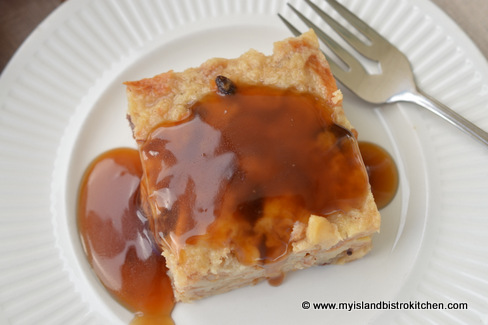
—————————————————————————-
Thank you for visiting “the Bistro” today. If you enjoyed this posting and recipe, please share it on your social media websites.
Connect with “the Bistro” through the following social media:
Join My Island Bistro Kitchen on Facebook
Follow “the Bistro’s” tweets on Twitter
Follow “the Bistro” on Pinterest
Follow “the Bistro” on Instagram
Pin Me To Pinterest!
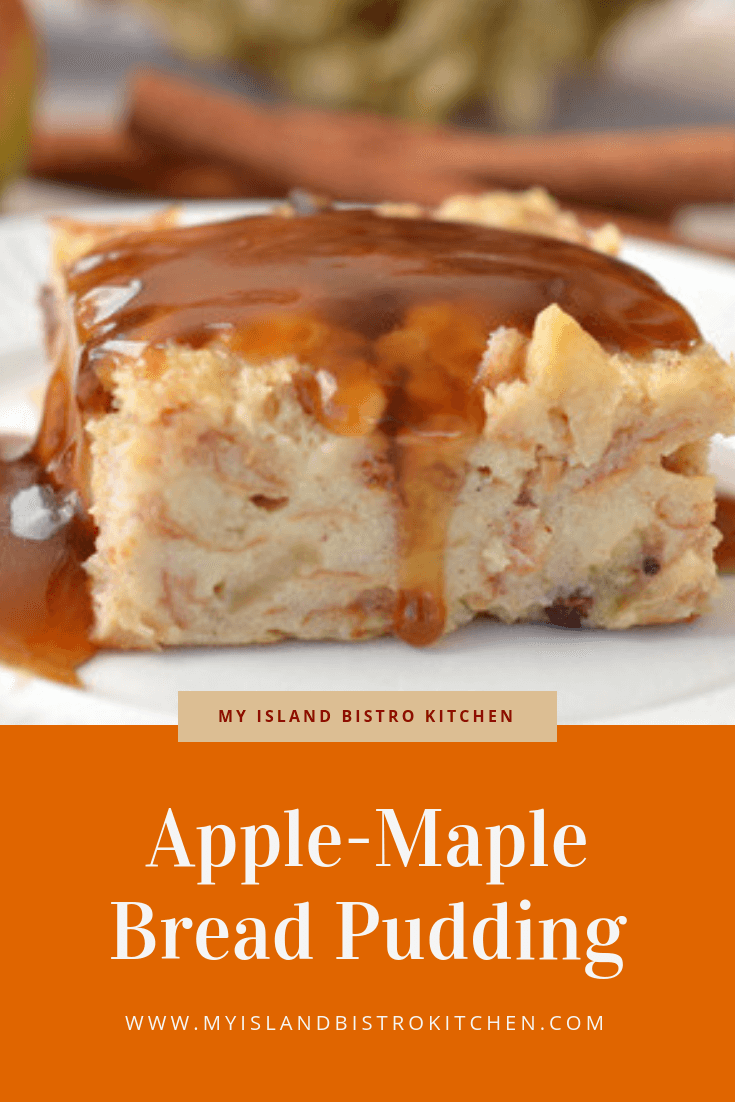
——————————————————————————
Apple and maple flavours combine to make a delectable bread pudding
Ingredients
- Pudding:
- 1 – 1 lb loaf French bread
- 3 cups whole milk
- 1 cup less 1½ tbsp Blend/cream (10%)
- 2½ cups thinly sliced baking apples (about 3 medium-sized apples)
- ½ tbsp butter
- 1 tbsp brown sugar
- 1 tbsp maple liqueur
- 3 extra large eggs
- 1 cup white sugar
- 1/3 cup maple syrup
- 3 tbsp melted butter
- 2 tsp vanilla
- 3/4 tsp cinnamon
- 1/8 tsp nutmeg
- 1/8 tsp allspice
- Pinch cardamom
- ¾ cup raisins soaked in 1½ tbsp maple liqueur
- Sauce:
- 1 cup brown sugar
- 3 tbsp cornstarch
- dash of salt
- 2 cups boiling water
- 2 tbsp maple syrup
- 2 tbsp maple liqueur
- 2 tsp vanilla
- ¼ cup butter
Instructions
- Assemble ingredients.
- Preheat oven to 325°F.
- Grease or line 9”x13” pan with greased tin foil.
- In large bowl, break the French bread into small pieces, crusts and all. Pour the milk and blend (cream) over the bread. Cover and let sit for 30 minutes then handcrush mixture until well blended.
- Meanwhile, peel, core, and thinly slice the apples. Melt butter in saucepan over medium heat. Add the apples and sauté for about 2 minutes. Sprinkle with brown sugar and sauté apples for another minute. Remove pan from heat and add liqueur. Return to heat and sauté the apples for 5-7 minutes, or until they are softened and a golden color.
- In medium-sized bowl, beat the eggs well. Add the sugar and beat again. Beat in the maple syrup, melted butter, and vanilla. Add the spices and stir well. Pour over bread-milk mixture in the large bowl and mix well.
- Lastly, gently fold in the sautéed apples along with the raisins. Pour mixture into prepared pan. Smooth batter evenly in pan.
- Bake for about 50-60 minutes or until it springs back to a light touch and/or a cake tester (or knife) inserted into 2-3 places in the pudding comes out clean.
- Remove pudding from oven and transfer pudding pan to a cooling rack to rest for 20 minutes. Slice into 12 pieces and serve warm with maple sauce, crème anglaise, or ice cream.
- To make the maple sauce, combine the brown sugar, cornstarch, and salt together in saucepan. Add the boiling water, maple syrup, maple liqueur, and vanilla together. Mix well. Add butter. Cook until sauce boils and reaches desired consistency. Serve hot over Apple-Maple Bread Pudding.
- Copyright My Island Bistro Kitchen



